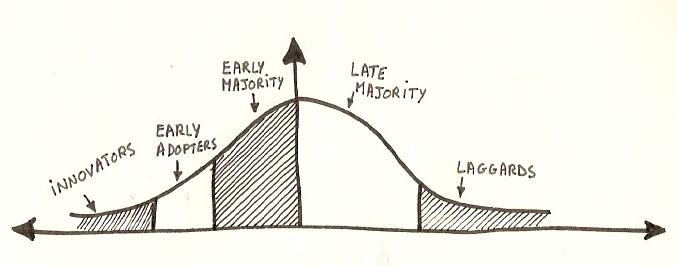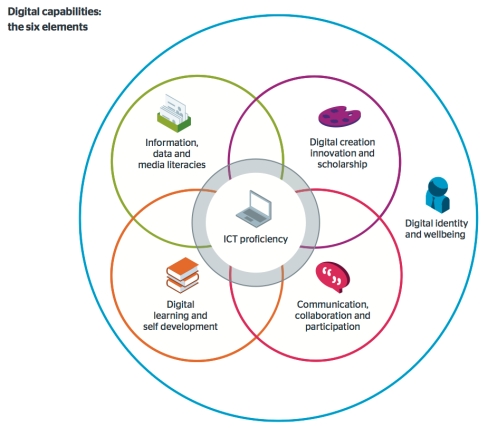
You see some great ideas on Twitter like #HEblogswap. When Chrissi Nerantzi invited me to exchange and mentioned it was the same week as MMU’s TEL-Fest, it gave me the idea for this post. Over at the University of Hull we’ve been restructured. The TEL Advisors are now Teaching Enhancement Advisors.
T for Technology and T for Teaching. What’s the difference?
In 2017 have they become one and the same thing?
What do you think?
For me the difference is an enhanced opportunity to promote learning design. TEL people tend to talk to the innovators and early adopters. Like attracts like. Using Rogers Diffusion of Innovations model, it can be harder to reach the late adopters. They often self-exclude from digital events, avoid technology workshops, don’t sign up for digitally themed conferences or funding opportunities, and rarely read the educational technology literature.
So I’d be really interested to follow your TEL-Fest to see if you’ve cracked this and if so, please can you share how to attract the digitally shy and resistant.

I think a focus on learning design via teaching enhancement might be useful. Institutions are increasingly collecting data on learning outcomes and student satisfaction, so promoting learning design may have greater potential to reach those parts our TEL identities often fail to reach.
We’ve been busy studying existing approaches such as these:
- Gilly Salmon’s Carpe Diem
- CAIeRO at the University of Northampton
- D4 Active Learning Workshops at University of Huddersfield http://ipark.hud.ac.uk/content/d4-curriculum-design-workshop-resources
- The ABC Connected Curriculum from UCL
Connectionist approaches, such as post-it notes, story boards, lego, play dough or activity cards, have been shown to enhance engagement and learning. The University of Stanford’s Reflect Imagine Try workshops use this Activity book and I’m looking forward to trying some of the ideas.
None of this means TEL has gone away; just that Pedagogy-First rather than Technology-First might attract those who say they ‘don’t do technology’.
Which brings us to the issues of digital skills and competencies. Whether the T is for Technology or Teaching, there’s always a need for digital confidence in curriculum design.

The Jisc Digital Capabilities model is often quoted as containing the essential elements for living, working and learning in 21st century. Assumptions are often made about individual digital skills but when you scratch the surface you find many online initiatives fail because a digital baseline is missing. Not everyone is comfortable working with the internet. In the 1990’s I ran Computers for the Terrified workshops and RSA CLAIT courses for Adult Education yet technology still doesn’t work for me – at least not as easily as it does for others, something my colleagues will vouch for!
Technology and Teaching are on the merge. The question we need to ask is What does a digital literacy baseline look like for learning and teaching in HE. If we can’t find ways to attract the late adopters we’ll continue to work with only a percentage of staff.
The digitally fluent and the digitally shy need to get together.
Around a table. Tea and Biscuits. Coffee and Cake.
We need to talk.

Let’s use #HEblogswap to think about a digital baseline. What skills does everyone needs to feel digitally confident in 2017. Three ways to join in.
A collaborative Google-Doc has been set up.
Send me or Chrissi an email s.watling@hull.ac.uk or c.nerantzi@mmu.ac.uk
Tweet using the hashtag #DigiConfidenceHE
…which brings me back to the start of this blog and how you find great ideas on Twitter. Those who don’t use it for resources, support and advice relating to their work or research are missing out. But – we also need to consider how those who do use it might be inadvertently contributing to the same digital divides we’re trying so hard to narrow and bridge.
